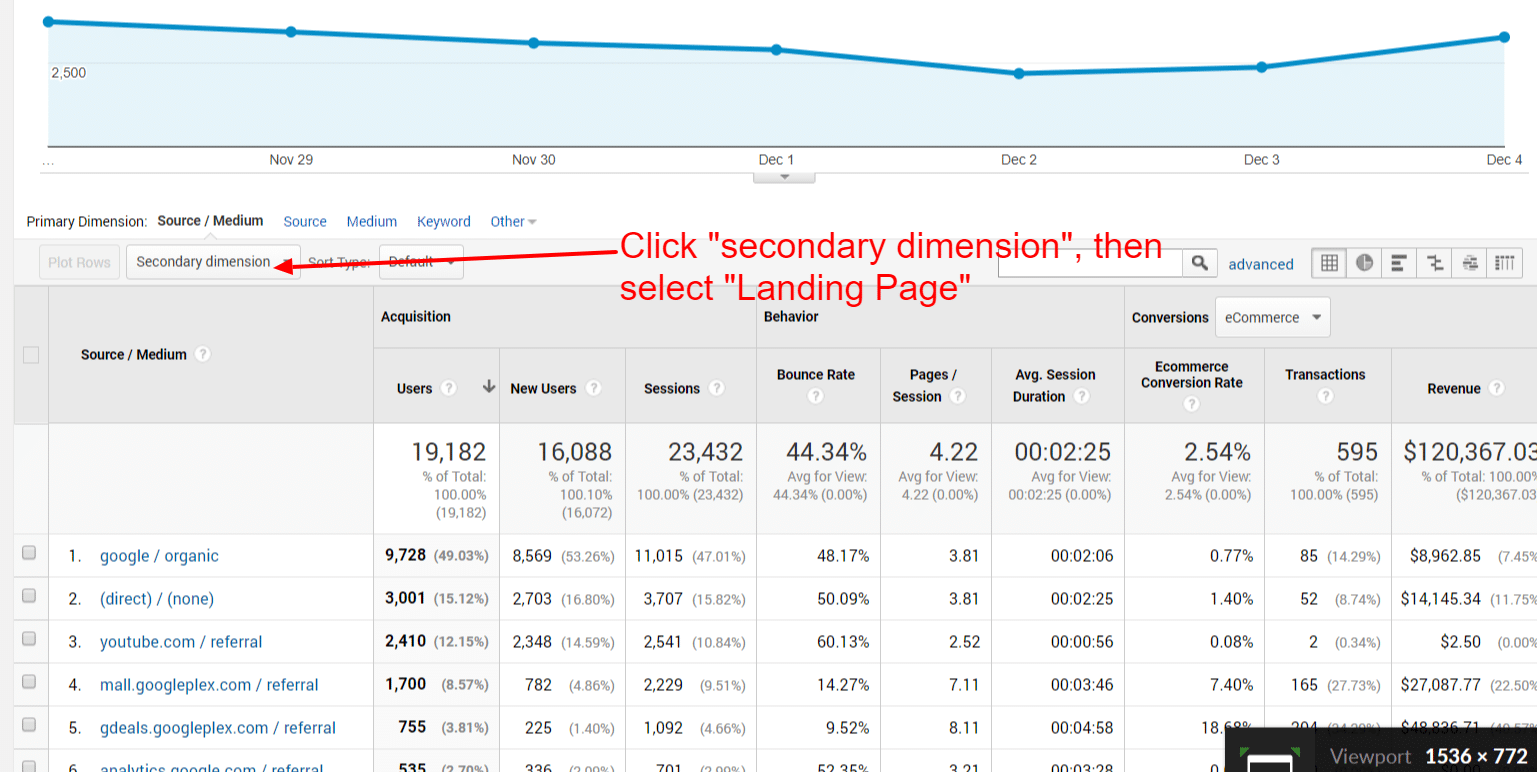Step-by-Step Guide: Leveraging Secondary Dimension in Google Analytics
Transform Your Analytics Approach With Second Measurement in Google Analytics
Discovering the possibility of second measurements in Google Analytics opens up a world of opportunities for companies seeking to raise their analytical technique. By incorporating secondary measurements right into data evaluation, a brand-new layer of understandings emerges, clarifying elaborate user actions and interactions. This innovative level of examination not only fine-tunes advertising and marketing methods yet additionally deciphers concealed opportunities for optimization and growth. The calculated application of additional measurements holds the crucial to unlocking a gold mine of indispensable information that can revolutionize how companies act and translate upon their data.
Recognizing Secondary Measurements in Google Analytics
Secondary measurements in Google Analytics offer added context to main data by permitting customers to examine metrics across a second measurement, supplying deeper understandings right into individual actions and interactions on an internet site. Secondary Dimension in Google Analytics. While main measurements provide essential information points such as pageviews, bounce price, and session period, secondary measurements use a more comprehensive view by segmenting the primary information better. This division permits users to analyze metrics in mix with one more dimension, such as website traffic sources, demographics, or user actions
Advantages of Utilizing Additional Dimensions
Using secondary measurements in Google Analytics offers a strategic advantage by improving the deepness of evaluation and offering a much more thorough understanding of customer interactions and actions on a web site. By including second measurements, analysts can obtain valuable understandings right into the efficiency of details sections or variables within their information. This allows a more comprehensive exam of individual actions past surface-level metrics, allowing for a much deeper expedition of the factors influencing customer engagement and conversions.

Just How to Carry Out Secondary Measurements
When incorporating additional dimensions in Google Analytics, one necessary step is to select the pertinent metrics and dimensions to enrich the evaluation procedure. Clicking on this button will certainly open a drop-down food selection listing different dimensions that can be included to your main measurement for deeper understandings.
After selecting the ideal second dimension, such as 'Source/Medium' or 'Tool Classification,' Google Analytics will display the information in a much more thorough style, allowing you to cross-analyze various facets of individual actions. Remember to trying out different combinations of key and second measurements to uncover important patterns and patterns that can educate your marketing methods. Going Here By applying secondary measurements thoughtfully, you can gain a much more thorough understanding of your website or app performance and make data-driven choices to maximize your electronic presence.
Analyzing Data With Second Dimensions
Improve your data evaluation in look at this web-site Google Analytics by integrating additional measurements to delve much deeper right into user behavior patterns and enhance your electronic advertising and marketing approaches effectively - Secondary Dimension in Google Analytics. By including additional dimensions to your key data, you can gain beneficial understandings that can help you make educated decisions about your internet site or app performance
Assessing data with second dimensions permits you to section your primary information further, giving a much more comprehensive sight of user communications. As an example, combining the main dimension of 'source/medium' with a second dimension like 'touchdown page' can disclose which details pages are driving website traffic from different resources. This details can be important in refining your material approach or optimizing your marketing campaign to boost conversions.
Furthermore, using second dimensions enables you to determine relationships between different metrics, assisting you understand the impact of different variables on user habits. Whether it's examining demographics alongside individual interaction metrics or tool groups with conversion rates, additional measurements equip you to reveal hidden trends and patterns that can assist your advertising and marketing initiatives.
Maximizing Performance With Secondary Dimensions
To enhance the performance of information analysis and decision-making in Google Analytics, integrating additional measurements is vital to maximizing performance metrics and getting much deeper insights right into individual habits patterns. By making use of second measurements, experts can dive past surface-level information and discover useful relationships that may otherwise go unnoticed. This optimization technique enables services to customize their advertising and marketing efforts better, identify areas for improvement in internet site usability, and boost total individual experience.
Additional dimensions offer an even more thorough sight of individual interactions by supplying added context to main data metrics. Coupling the primary dimension of address 'landing page' with an additional dimension like 'device classification' can reveal whether specific devices are extra most likely to drive engagement on specific touchdown web pages. This understanding can inform responsive layout enhancements or targeted marketing strategies to enhance efficiency.

Final Thought
In conclusion, the combination of second measurements in Google Analytics offers organizations with a powerful device to enhance their analytics strategy. Secondary Dimension in Google Analytics. By diving deeper into user habits and communications, marketing experts can discover beneficial insights that can drive performance optimization and improve the general individual experience. Leveraging second measurements enables an extra thorough analysis of data, bring about even more enlightened decision-making and tailored marketing efforts
Secondary measurements in Google Analytics offer additional context to primary information by permitting customers to assess metrics throughout a second dimension, using deeper insights right into user behavior and communications on an internet site. While primary dimensions provide basic information points such as pageviews, bounce rate, and session period, second dimensions provide a more detailed sight by segmenting the main data better.One of the crucial advantages of making use of secondary measurements is the ability to reveal connections and patterns that may not be instantly noticeable when analyzing information with primary dimensions alone.When including secondary measurements in Google Analytics, one essential action is to choose the appropriate metrics and measurements to improve the evaluation process. Matching the primary dimension of 'touchdown web page' with a secondary measurement like 'tool classification' can expose whether particular tools are more likely to drive interaction on particular touchdown web pages.